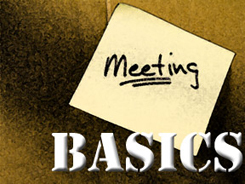
As a volunteer organization, a community association faces the unusual challenge of running a corporation with part-time leadership. Volunteer homeowners have varied experience and limited time to dedicate to their roles. Even with professional managers managing the day-to operations of an association, board members are still called upon to fulfill roles for which they do not have the resources (time or experience) and this is where committees can be particularly valuable.
The three types of committees are
- Mandatory committees
- Standing committees and
- Ad-hoc Committees
Mandatory committees such as the Architectural Review Board are specifically named in the governing documents. The Architectural Committee/Review Board is often described in detail in the Declaration. Architectural control is an important component in maintaining the character and quality of a community, and the powers that are given to the architectural body vary significantly from one community to another. In some documents the architectural committee is an advisory body composed of homeowners appointed by the board that makes recommendation to the board of directors. In other communities the board may appoint homeowners to an architectural board thatoperates independently of the board of directors, with full and final authority to render decisions and make rules but with an appeals process to the association board.
Other mandatory committees may also be specified in the declaration or bylaws, such as a Nominating Committee and an Elections Committee, and both play an important part in ensuring that qualified and willing candidates are available for election to vacant board positions at the annual meeting.
The powers of the board usually also include the power to appoint other committees "as the board deems appropriate in carrying out its purpose." These committees may include a Recreation Committee, Maintenance Committee, Communications Committee, Audit Committee or a Grievance Committee. (The grievance committee has traditionally not been one that attracts droves of volunteers!). Such committees are further distinguished based on whether they are a standing committee or an ad-hoc committee.
Standing committees are often identified in the declaration and/or bylaws of the association.
- They are "function oriented" e.g. an Budget and Finance Committee serves a clearly defined function in the operation of the association.
- Standing committees remain in force indefinitely.
In contrast, ad-hoc committees
- Are "task oriented" e.g. a grounds improvement committee may be established to fulfill the task of planning, researching and coordinating installation of new landscaping at the entrance to a community.
- Cease to exist once the assigned task has been completed.
For any committee to be successful some basic steps should be followed.
- Determine the authority/basis for the establishment of the committee (refer to the legal documents of the association)
- Also identify the scope of authority that the committee has to act - are they allocated a budget, can they make decisions independently or do they make recommendations only to the board without authority to act?
- Clearly define the purpose and function of the committee so that they fulfill a specific need within the association
- Detail the responsibilities and activities of the committee and its members
- The composition/structure of the committee should identify how many members it should have, how are they appointed, whether they should be residents, the leadership and voting structure of the committee
- Identify a timeline for tasks to be completed and the term of the committee's charter (especially for ad-hoc committees)
- State how many and what kinds of recommendations the committee is expected to deliver to the board
- Clarify the board's expectations for reports and minutes to be provided to the board at regular intervals so as to ensure clear oversight and communications
- Create an understanding of the committee's relationship to the manager and how they will be expected to interact
For continued success of committees in your association
- Be sure to recognize the efforts of the volunteers
- The board should be prepared to make decisions and act on recommendations brought to them by committees. (Think this through when establishing the committee and defining its purpose).
- Verify that the association's insurance covers committee members in addition to board members for errors and omissions as well as fidelity insurance.
Often overlooked or under-appreciated, committees are the basic building blocks of a healthy association. Committee member involvement meets the board's goal of fostering a stronger community in several ways. Aside from fulfilling a specific role in the functioning of the association and addressing an identified need, the committee's contributions help the board to fulfill its policy-making role more efficiently by allowing board members to receive necessary input and different viewpoints, while remaining focused on their role of governance.
Related Articles
- How to Start a Neighborhood Association
- HOA Website Can Save Money And Increase Communication
- How Neighborhood Assoc Websites Can Increase Participation
- A Condo Association Website Can Facilitate Communication
- Neighborhood Watch-How to Start One!
- Utilizing a Neighborhood Watch Website
- An Effective Meeting Agenda
- A Guide to Successful Association Meetings
- Attracting Volunteers
- Budget Preparation Tips
- Effective HOA Communications
- Have An Effective and Efficient Meeting Every Time
- Directory of Association Articles
 Print
Print Email
Email







